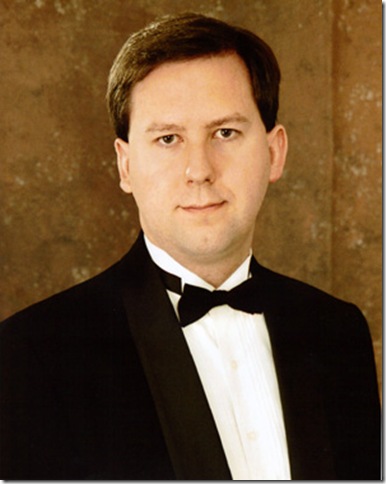For an instrument that has been such a central part of music-making for the past 200 years, it’s interesting to hear that there are new compositional things that can still be done with the piano.
In his Piano Lovers recital Sunday afternoon at the Steinway Gallery in Boca Raton, the pianist Christopher Atzinger, a St. Olaf College professor currently preparing for the San Antonio International Piano Competition, gave his audience a glimpse into that world with two contemporary pieces that added fresh excitement to his program but also fit well with the rest of the works.
Atzinger is an impressive technician with a highly personal style and a clear engagement with the music he is playing. He opened with the seven pieces of Brahms’ Op. 116 Fantasies, taking interpretive liberties with them that were generally quite effective, if debatable on musical grounds.
The A minor Intermezzo (No. 2), for instance, which followed a D minor Capriccio that was notable for its emphasis on the ins and outs of the tempestuous main theme rather than strict fidelity to the score, was very slow, sober and introspective. Atzinger took the contrasting section at much the same tempo, an interpretive choice that was persuasive for continuity of mood, and also showcased the pianist’s beautiful tone quality.
The E-flat section of the subsequent G minor Capriccio also received a very deliberate reading that gave the music a granitic kind of nobility, while the E major Intermezzo that came next was notable again for the poetry of Atzinger’s tone and the quiet depth of Romantic feeling he brought to it.
A late sonata of Beethoven, the Op. 101 in A (No. 28), followed the Brahms group, and here, too, Atzinger was unafraid to make big choices. Unless he pedaled them into inaudibility and I was unaware of it, he left out most of the doubled octaves in the left hand of the opening Allegretto ma non troppo, favoring clarity over solemnity, which made for a much stronger contrast with the F major march. The march is very awkward to play at a fast tempo, and Atzinger had some of the problems that creates: less-than-clean chords, a somewhat wayward tempo.
But his playing had power and color, and in the somber Adagio he was on more comfortable ground. In the finale there was something of a hammered approach that was a little too aggressive, but in the fugue, his matter-of-fact, outgoing interpretation was ideal. In all, this was a strong, persuasive account of this difficult, elusive work.
The other repertory work on Atzinger’s program was Debussy’s L’Isle Joyeuse, a piece that has more in common with earlier piano works by the composer such as Pour le Piano rather than it does some of the mistier Preludes. Atzinger made much of the springy, highly rhythmic character of this piece and its exuberant conclusion, which was neatly accomplished.
Admirable as all this was, this recital was most interesting for its two contemporary pieces, the first of which was a brand-new composition, probably in its Florida premiere, of Ivory and Ebony, by the American composer Joan Tower. It was commissioned for the San Antonio contest, and it’s an evocative work in which jazzy tone color and broad emotionalism are expressed through the idea of a rivalry between music made on the black keys and the white keys.
Tower’s piece begins with a soft, quiet series of repeated chords that alter slightly harmonically, creating a sonic color wash very much in keeping with the Debussy that followed it. Tower makes use of the full keyboard, from deep rumblings in the bass to running passages in opposition directions that reach both ends of the instrument. Amid all this tonal bravura is a little motif, the first three notes of a minor-key scale, that help anchor the music in a narrative context.
It’s a well-crafted piece, as would be expected from a major composer, and while it may not be all that distinctive it does make a big impression on the listener, and assuredly presents tremendous technical demands on the performer.
For an encore, Atzinger played the first movement of the Piano Sonata No. 1, written in 1990 by the contemporary Australian composer Carl Vine. This is a tempestuous, powerful piece, rich in popular-music influence but also strongly in the tradition of 20th-century piano writing. It, too, presents a huge challenge to the performer, with its repeated motoric patterns, huge leaps in both hands, and gigantic climaxes, alternating with semi-jazz brooding in which wistful scraps of melody wander over big wee-hours chords.
The Vine sonata appears to be a popular work with the current generation of pianists, and for the very good reason that its music is of high enough quality to make its difficulties worth overcoming. Atzinger, a player of frequent facial contortions, threw himself into the piece, displaying again a large technique and a thorough passion for the music he’s playing. It was an unusual but most rewarding way to end a program, and the Steinway Gallery audience gave him an enthusiastic response.
